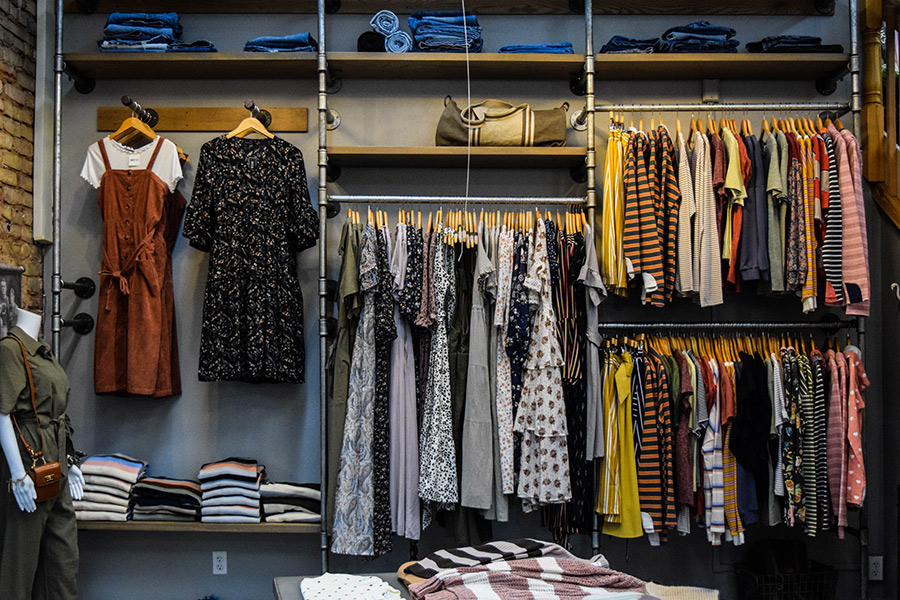Understanding the Role of Quality Management In Building a Sustainable Fashion Business

Image by Burgess Milner on Unsplash
Implementing and documenting a solid Quality Management System (QMS) is critical in strengthening quality control processes in fashion product development and manufacturing. Quality management and quality assurance play a significant role in the fashion industry, as garments and accessories must consistently meet predefined standards to appeal to consumers and avoid wasted resources. A well-designed QMS framework helps fashion organizations systematically monitor and enhance quality at every stage, from initial design concepts to final assembly and distribution.
Formalizing inspection checkpoints, material qualifications, and performance criteria supports continuous improvement. Comprehensive documentation creates an auditable history to resolve issues quickly and prevent reoccurrences. Adhering to a standardized quality protocol also helps fashion brands protect their reputation for craftsmanship and reliability over time. An effective QMS gives leadership visibility into quality-related metrics, risks, and cost impacts across the supply chain. When you correctly understand the role of quality management and its implementation, you can optimize processes for enhanced customer satisfaction while strengthening operational excellence and profitability.
What Companies Aim To Achieve
Your company aims to give customers top-notch products that exceed expectations. Keeping these high standards is crucial because not meeting them can lead to severe problems, like damaging your business's reputation and losing customers. Imagine this: a customer buys a new, trendy outfit they're thrilled about. The fabric feels fantastic, and it fits perfectly. But after just a few washes, they see the seams unraveling, and the color fades fast.
That stylish outfit they loved? It's probably headed for donation or the trash because something went wrong. Most likely, more care needed to be taken to ensure its quality. It could mean losing the customer's trust and facing a negative online review as a business owner. Thankfully, there's a way to prevent this: quality assurance in manufacturing. It will ensure you only offer your customers products they can rely on.
Is quality control the same as quality assurance?
Quality control and quality assurance seem similar, but they focus on different parts of making clothes. Quality control (QC) happens at the end. It's about checking the finished products to ensure they're up to scratch. This step catches any problems before the clothes get to customers. Quality assurance (QA) is broader. It covers everything from the start to the finish of making clothes. It's more about preventing issues by taking care in every step, from picking materials to training workers, to ensure the final product is top-notch.
QA in the Production Process: What does it look like?
In clothing production, quality management practices go beyond just checking for defects. It covers design, sustainability, and ethical rules. The process usually includes checking materials before starting, ensuring designs meet quality standards, monitoring things like seam strength and color during production, and a final check of finished garments for any issues. According to Bomme Studio, a pioneer in the sustainable fashion industry, good quality assurance helps clothing makers ensure their products are top-notch, which builds customer trust and keeps them returning. It's all about meeting or even surpassing what people expect from your brand.
What are the elements of QMS?
The components of a quality management system can differ based on your business requirements. Yet, certain fundamental elements tend to be effective in a fashion-focused business. These key components include:
Quality policies
Crafting a quality policy and objectives is crucial for designers. Identify the quality standards that apply to your products and set material and defect goals aligned with these standards. Maintaining a quality manual helps in managing these standards effectively.
Instructions and processes
Creating procedures and instructions act as a guide for existing and future employees. For instance, outlining steps for the sample quality assurance phase ensures consistency and clarity.
Historical records
Maintaining records from past projects aid in testing and refining sampling and production processes. For fashion enterprises, these records encompass quality assurance forms, procedure sheets, and checklists. Comprehensive documentation covering every facet of apparel ensures thoroughness, examining fabric material, stitches, seams, patterns, colors, and linings to determine high-quality fashion items.
Data management
Organizing and storing valuable business data in an accessible manner is crucial. Utilize user-friendly tools such as Google Drive, Dropbox, or Microsoft OneDrive for efficient data management.
Tech packs
Tech packs are the ideal tools to convey your quality standards to production partners. Ensuring these packs are detailed, concise, and clear is crucial for effectively communicating quality requirements.
Customer satisfaction
Ensuring customer satisfaction involves seeking feedback from every client and providing insights for future product and design enhancements.
Establishing a structured process for customers to leave reviews or ratings post-purchase and storing this data are best practices within your QMS.
Multiple feedback channels like social media monitoring, incentivized feedback, and customer surveys contribute to gathering comprehensive customer insights.
Quality checks
An exhaustive inspection method delegated to experts is essential to complement the company records. Inspecting fashion apparel should cover stitching, seams, and fabric quality.
Sustainable fashion management means you must perform standard tests during the inspection. These tests include fit, seam strength, dry and wet crocking, fatigue, and stretch.
What are the benefits of quality management in clothing production?
From picking materials to the most minor details in stitching and finishing, there are many chances for things to go wrong during clothing production. A solid quality assurance and management process doesn't just stop these problems—it encourages the whole team to improve. It's about constantly finding ways to improve how things are done. Here are more specific benefits of a quality management system to the fashion industry.
Keeping consistent quality
A solid quality management setup ensures every piece of clothing is top-notch. It involves checking and testing at different stages of making clothes. By catching and fixing problems early on, manufacturers dodge the expensive fallout of selling faulty products.
Efficient cost management
Cutting costs without compromising quality is vital, especially in an industry where slim profit margins make a big difference. Quality assurance steps in early to tackle problems, saving companies tons of money that might have gone into product recalls, returns, or legal battles. A smooth quality management process can even speed up how quickly products hit the market, boosting profits for manufacturers overall.
More trainable employees
Training new employees becomes more straightforward when you explain what "quality" means for your company right from the start.
Compliant with industry standards
Following rules and standards in clothing production differs based on where, who, and what you're making. A sound quality management system makes sure to stick to these rules. This helps maintain quality standards for the industry and avoid facing legal problems.
Improve brand image
Making and delivering top-notch clothes always makes a brand look good. Happy customers come back for more and tell others about it. When clothing makers focus on quality assurance, they build a loyal group of customers, which helps them thrive in a tough market where everyone's competing. In the fashion industry, where everyone aims for top-notch products, having a QMS helps you stay competitive among all those other brands.
Ethically sourced materials
Ensuring materials come from ethical sources and that production follows fair practices is more critical than ever. Quality management keeps tabs on this, helping meet the demand for socially responsible clothing. Not taking quality assurance has serious consequences. It can make customers unhappy, lower sales, and cause trouble with rules and the environment, wrecking a company's reputation. Quality assurance isn't just a choice—it's a must, especially if you want to stay ahead of the competition and meet global standards. Putting money into a sound system and doing quality assurance right is about more than just business success. It's about making the fashion industry more responsible and caring about customers' wants.

Image by Clark Street Mercantile on Unsplash
Established Standards Will Help Businesses Thrive
Ensuring products meet top-notch standards boosts efficiency and productivity and keeps customers happy. It also lowers the chances of recalls or quality problems and supports eco-friendly and fair business practices. In fashion, a QMS is a must to keep up with what customers want and stay ahead in a busy market.
Quality management systems can genuinely transform a fashion company. Picking the correct elements for your brand brings many perks, especially top-notch quality control. These elements bring structure and set high standards, saving your fashion business from messy or flawed operations in the long and short run.
Hits: 985 | Leave a comment
Tags:fashion industry, management, quality


















